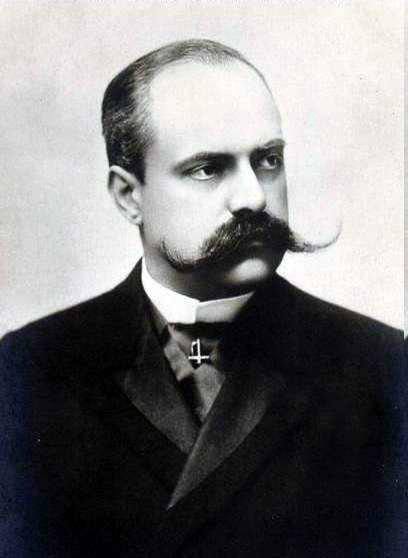 |
| El príncipe Víctor Napoleón y Alice Biot. |
En 1905, la prensa belga, que se extendió a los medios internacionales, empezó a publicar cada vez más noticias sobre el amor entre el príncipe Víctor Napoleón, jefe de la Casa Imperial de Francia, y la princesa Clémentine de Bélgica, que deseaban casarse. Sin embargo, varios obstáculos se oponían a sus planes de matrimonio. El rey Leopoldo II de Bélgica, padre de la princesa, no estaba muy de acuerdo con esta unión, ya que no quería molestar a la República Francesa. Además, se habló mucho de la relación del príncipe Napoleón con una ex bailarina francesa llamada Marie Alice Biot. Se decía que la pareja se había casado y había tenido hijos. Este matrimonio preexistente obviamente obstaculizaría las esperanzas de Víctor y Clémentine de convertirse en marido y mujer.
 |
| Príncipe Víctor Napoleón. |
El príncipe Víctor Jerónimo Federico Napoleón nació en el Palacio Real de París el 18 de julio de 1862 como primogénito y varón mayor del príncipe Napoleón Bonaparte (1822-1891) y la princesa Clotilde de Saboya (1843-1911), que se casaron en 1859. Los abuelos paternos de Víctor fueron el príncipe Jerónimo Bonaparte, antiguo rey de Westfalia, y su segunda esposa, la princesa Catalina de Wurtemberg. Los abuelos maternos de Víctor fueron el rey Víctor Manuel II de Italia y su primera esposa, la archiduquesa Adelaida de Austria. En el momento del nacimiento del príncipe Víctor, su primo hermano era el emperador Napoleón III de Francia, que fue depuesto en 1870.
 |
| Un breve perfil de Alice Biot en Ces demoiselles de l'Opéra , 1887. |
En algún momento durante la década de 1870, el príncipe Víctor Napoleón inició una relación con Alice (Marie) Biot, una bailarina de la Ópera de París. A una edad muy temprana, Mademoiselle Biot hizo su debut en la Ópera de París en mayo de 1870 en el estreno del ballet Coppélia en el papel de Cupido. En marzo de 1880, Alice bailó en el estreno del ballet Aida . Un breve perfil de 1887 de las bailarinas de la Ópera señaló que Biot era " una persona inteligente y amable. [Ella] trabaja mucho. [Ella] lleva una vida simple y normal ". Alice Biot se retiró de la Ópera en 1896.
 |
| Alicia Biot. |
The liaison between the prince and ballerina only became public knowledge nearly thirty years after it began. Victor’s desire to marry Clémentine left the door open for the press, perhaps aided by persons [i.e. King Léopold II] not wishing their attachment to materialise into marriage, to report on his ties with Alice. It was widely noted that at some date Prince Victor Napoléon and Alice Biot had religiously, but not civilly, married in France. They had several children together. When Victor moved to Brussels, Alice and their children followed him to the Belgian capital. While the prince lived in home on the Avenue Louise, his apparent wife and their children lived in a separate residence, though not too far from his own.
 |
| Pierre Biot. |
 |
| Eugéne Biot. |
 |
| Suzanne Biot. |
Within the past two decades, more information has come to light about Victor Napoléon and Alice Biot’s relationship. It is not certain whether the couple were ever religiously married, as no church records have been found to confirm this. One of the most insightful resources on the couple is a biography of Victor entitled Le Prince Victor Napoléon, which was written by his great-granddaughter Laetitia de Witt and published by Fayard in 2007. This work confirms that Victor and Alice were together for quite some time. Laetitia de Witt writes that Alice Biot was granted the title of Contessa di Beauclair/Beauclerc (Comtesse de Beauclair/Beauclerc) by King Umberto I of Italy at the request of Prince Victor. De Witt also writes that Victor and Alice had two sons: Pierre and Eugéne. It is possible that the pair had a further child, a daughter named Suzanne, who is not mentioned in the biography of Prince Victor. Aside from Suzanne, whose descendants have published genealogical information online regarding her life, it is not known what became of Pierre and Eugéne.
 |
| The acte de mariage of Suzanne Biot and Walter Unger, 1898. |
On 21 December 1898 at Paris, one Alice Marianne Suzanne Andrée Biot (born at Paris on 13 March 1882), the daughter of a Marie Biot and an unnamed father, married Walter Unger (born at Vienna in January 1869), a cavalry officer in the Italian army and the son of Charles Unger. Among the witnesses to the marriage were Count Edouard d’Harcourt, a M. Biot de Beauclerc (possibly the mother of the bride), and an Austrian count. If Suzanne Biot was indeed the daughter of Prince Victor Napoléon, then the prince has many descendants alive today who are not a part of the Imperial House of Bonaparte.











No comments:
Post a Comment